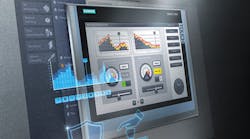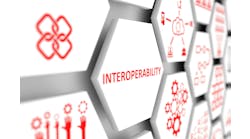In the past 20 years, various software and hardware technologies have become an inherent part of our lives. Remote connectivity, intelligent touchscreens, web-based applications and high-definition graphics are among the technologies that are simply expected as the building blocks of the devices, computer systems and networks we interact with in personal and commercial settings (Figure 1).
For decades there have been developments to streamline our interaction with technology, making it easier, faster and more intuitive.
Also read: Edge computing in the post-COVID-19 era
Figure 2: The ability to swipe, pinch to zoom, rotate and use other gesture commands offers easy, fast, user-interface-free interaction with a device that is otherwise impossible with legacy single-touch devices.
Why are commercial technology standards valuable?
Efficient, fast technology saves time and offers flexibility in applications. For example, we have become accustomed to multi-touch screens on personal devices. The ability to swipe, pinch to zoom, rotate and use other gesture commands offers easy, fast, user-interface-free interaction with a device that is otherwise impossible with legacy single-touch devices (Figure 2).
Web-client-based applications, even within a closed intranet, allow connectivity to software from a variety of devices and locations, no longer requiring a physical presence to interface with a specific computer (Figure 3).
These technologies have become stable, commonplace toolsets used throughout consumer and commercial products and applications, often leveraging universal standards such as HTML5 and Javascript. These tools help to reduce downtime, lower development costs for new production lines, allow broad customization and offer flexibility not available in proprietary architectures. In addition, the skill sets needed to customize systems using commercial-software standards are widely available in the labor market.
Figure 3: Web-client-based applications, even within a closed intranet, allow connectivity to software from a variety of devices and locations, no longer requiring a physical presence to interface with a specific computer.
Despite the prevalence of these technologies, industrial settings have not stayed abreast of this innovation, maintaining legacy systems that often operate within a closed proprietary ecosystem and don’t offer flexible user interfaces, remote access, intelligent alerts or high-definition images.
These closed platforms have planned incompatibility where they only can interface with hardware and software from the same vendor, limiting plant choices and creating a substantial risk of downtime.
Modular, scalable systems that are widely compatible with a wide variety of platforms, components and vendors are not only the most risk-averse choice for plants but also benefit industrial technologies as a whole.
Choosing customizable, open-source platforms that support commercial technology standards is the basis of building a plant ecosystem that is compatible with many vendors and reduces single-source risk and avoids forced upgrades. In addition, robust competition drives higher quality and innovation across the board, driving competition among vendors and creating better products in the industry overall at better prices.
How can plants integrate commercial technology?
When choosing industrial technology platforms, plants need to evaluate the ability of any platform to employ existing standards and the flexibility to be compatible with future standards. Plant decision makers and planning teams need to evaluate vendors and products to determine if they support universal technology standards and offer broad compatibility with other products.
Vendors should be open about their compatibility, customizability and which technologies they support. If a vendor is not clear about technology compatibility for their products when evaluating them, ask critical questions:
- Do you have integrated web client support?
- Are your touchscreens using multi-touch?
- Will this interface with other vendors’ technologies?
- Do you support standard operating systems such as Linux or Windows, or common technology standards such as Javascript & HTML5?
For example, panels that support vector graphics for data visualization, multitouch display technology and software customization save time and money in a plant environment. Integrated edge computing, web-client support for remote access and either Windows or Linux support deliver the ability for any specific application to leverage custom software and send alerts to personal devices and email accounts.
The features we take for granted in personal technology or standard business applications can be applied directly in an industrial environment, increasing efficiency and reducing costs. These must be part of the critical evaluation process before employing hardware in an industrial setting.
The reality is that this is just the beginning of a trend in industrial hardware. As universal, multifunction hardware platforms become more common in industrial settings, new technology standards will become available for implementation as soon as they are viable.
Unified systems that support software customization and broad compatibility are the basis of next-generation platforms that are being installed. These technology platforms, which are the basis of efficient, customizable industrial systems, will also support new, cutting-edge technology standards over the next two years. The hardware will be leveraging edge-computing devices for application-specific artificial intelligence, with true recursive learning and self-adjusting algorithms that can optimize processes and minimize downtime risks.
Implementing platforms that support commercial-standard technologies will ensure your ability to be more competitive and stay competitive in the future as the speed of new technology adoption increases.
Ramey Miller is the HMI/edge product marketing manager Siemens Industry for the United States. He has a bachelor's degree in computer and electrical engineering from Purdue University. Contact him at [email protected].




